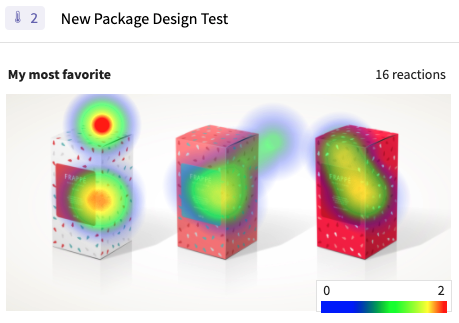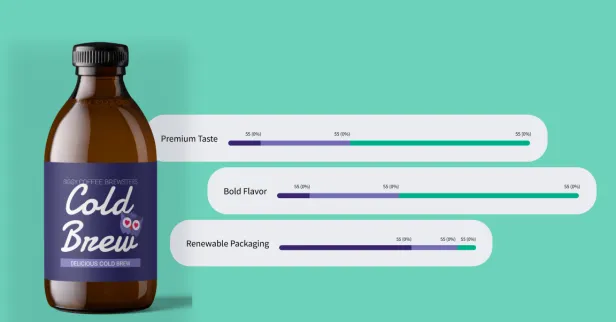A survey is often the best way to get information and feedback to use in your decision-making. And the good news is, you don’t have to be an expert to create one!
While it may seem simple, creating a survey is an important early step in the research process that should not be taken lightly. As the old saying goes, garbage in, garbage out.
The objective of any survey is high-quality feedback that is gathered from your target population. Whether you are engaging customers or employees or even patients, you want to be able to effectively ask questions and get answers that are relevant to the objectives of your research.
So with that in mind, let’s talk about designing a survey that accomplishes all of this.
Set Clear Goals
Before diving into survey creation, it's critical to lay out clear and attainable goals for your research. Are you trying to decide which product concept(s)to move forward with in production? Do you need to figure out why your organization has seen an increasing turnover rate? Or are you interested in finding what treatment has been most effective for a particular patient population?
Knowing your ultimate objective is imperative in guiding the rest of the survey creation process.
Define a Target Audience
Is your target population relatively small and easy to contact? If so, then it may be feasible to survey the entire population. However, if your population is large you have to take into consideration sampling techniques. This allows you to only contact a representative subset of the population in order to draw conclusions about the group as a whole. Stay tuned for more posts about proper sampling techniques.
Design Effective Questions
It should go without saying, but keep your audience top of mind while writing your survey questions. Make sure your language is direct and easy to understand for your participants. Generally, we find that short specific questions will elicit a higher response rate.
Be straightforward, and make sure to avoid any potentially biased, leading, or hypothetical questions. Remember that simple words and phrasing will yield more precise answers from your respondents.
There are many different types of questions that you can use. Some of the most common are:
Multiple Choice Questions
Multiple choice questions are, by far, the most commonly used question type. They simply ask your respondents to select one (or more) answers from a list you provide. These types of questions are direct, intuitive, and produce data that is easy to analyze.


When creating multiple choice questions, we recommend opting for an odd number of answers, like 5 or 7. Forcing respondents to answer a question with an even-numbered scale will bias your end results, as those who are truly neutral will have to select a response that does not represent their feelings. An odd number of answer options will give you more variance and better data for analysis.
And as for the 5 versus 7 answer scale, the bottom line is: if you’ve spent time debating this, you’ve likely spent too much time thinking about it. It’s far more crucial to focus on effective question creation and setting tangible benchmarks.
 Tip: Remember to create your scales from low to high (e.g. least important to most important, or disagree to agree, etc.).
Tip: Remember to create your scales from low to high (e.g. least important to most important, or disagree to agree, etc.).
Multiple-Choice Image Questions
Similar to those above, multiple choice image questions ask your respondents to select one or more images from a group you provide. This type of question works well when you need feedback on creative, design, and visual qualities.
Grid Questions
Grid, also known as Matrix, questions are simply a series of scale questions grouped together. These types of question groups are handy if you’re asking multiple questions with the same answer options. Often grids are filled with Likert or rating scales.


Rank Order Questions
Ranking questions allow respondents to rank the answer options you provide according to their preference. This can be especially useful to understand the nuances of your audience's preferences, understanding how specific options relate to other's popularity.



Make sure that your respondents are familiar with all of the answer options you provide, otherwise, the responses may not be reliable.

Tip: These questions can take much more time for respondents to answer, so only use them when absolutely necessary.
Rating Scale Questions
Scale, or slider, questions let your respondents rate something within a range you provide. These questions are simple and interactive for your respondents, which can make the overall survey experience more enjoyable.


A good use case for a rating scale would be Net Promoter Score questions, as they gauge the likelihood of a consumer to recommend your product or service, on a scale of 1-10.
Text Entry Questions
Text entry, or open-ended, questions are just that: open-ended questions that allow survey respondents to type their answers into a text box.
Generally, it is best to use these sparingly. They are often more time-consuming for respondents, and as the data is not quantifiable the data can be more difficult to analyze. That being said, open-ended questions can be good if you’re using Natural Language Processing (NLP) text analysis software, which can enable you to get powerful sentiment and thematic data from your respondents
Heat Mapping Questions
Heat mapping, or click mapping, questions will give you real-time feedback on visualizations. These types of questions will allow respondents to click on specific areas of the image and apply feedback. The information is then sorted into color-coded visualizations based on the type of feedback (positive, negative, neutral) and the frequency of engagement.

You can utilize heat mapping to gather insights on everything from your product prototypes and design concepts to shelf placement and packaging. This question type will help you understand your user’s experience to better guide your development.
Keep Your Survey Concise
Much like how we recommend keeping your questions short and to the point, so should the survey itself. Remember that you're asking people to take time out of their busy day to help you out, and usually for free. So the best way to respect their time is by not taking up too much of it! In return, you’ll get higher completion rates and more reliable data.
The bottom line? Keep it simple, short, and clear.
Set Expectations Up Front
Don’t leave your respondents in the dark- be sure to provide some background information upfront. Share information about the survey length, sections, and the number of questions at the beginning to ensure respondents know what they will be getting into. Additionally, give your respondents a little context to help them better understand the why behind your survey questions.
You're likely to get a higher response rate if your recipients know why they were getting the survey, how it will work, and what types of feedback you are looking for.
Avoid Biased Question & Answer Options
It may seem like a no-brainer, but don’t ask leading questions. Often when you’re close to a project, it can be easy to accidentally insert your own opinions into your question and answer options.
But the fact remains- your respondents are less likely to give thoughtful and honest feedback if they feel the question or answer options are leading them in a specific direction.
There are a few ways to combat this- one of the simplest ways is to include “neutral” answer choices, like “none of the above”, “neutral”, or “other”. Similarly, make sure to word each question with simple and precise language to ensure responses are not influenced one way or another.
Test Your Survey Before Distribution
This is a simple, yet often-overlooked step in the survey build and design process. Make sure you preview and test your survey before sending it out en masse. This can help to reduce spelling or phrasing errors that might confuse respondents or muddle your message. Similarly, it can help you catch any larger issues too- like missing questions or poor formatting.
And if you’ve been working closely with the project, it can be helpful to loop in a colleague or two to test your survey for any mistakes you might have simply overlooked.
Surveys with SightX
Utilize SightX survey building tools to engage your audience at any point in the consumer journey and get answers on your pressing product, messaging, brand, or market questions. Design surveys as simple or complex as your use case requires, with all of the flexibility you could ever need. Build projects, distribute your surveys, and analyze the results all in a single, simple-to-use platform.
Ready to get started? Reach out for a demo today!
